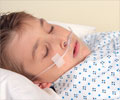Inactivity of astronauts during spaceflights may have more pronounced effect on skeletal muscle than hypoxia (lack of oxygen), stated study.

‘Inactivity of astronauts during spaceflights may have a more pronounced effect on skeletal muscle than hypoxia (lack of oxygen).’





Mitochondria are found in cells and they use oxygen to produce energy in a process called oxidative metabolism. People use their skeletal muscles for movement, and therefore to be active requires oxidative metabolism by these muscles. The muscles need for oxygen led researchers to think that the low oxygen ("hypoxic") environments of spaceflight or future planetary worlds would impair function. The results demonstrated that the impairments following microgravity were not aggravated by hypoxia. Given that inactivity and hypoxia are frequently associated with several important cardiovascular and respiratory diseases there is a suggestion that for skeletal muscle, inactivity is worse compared to hypoxia. If confirmed, this finding would have obvious relevant consequences on therapeutic and rehabilitative interventions: correction of hypoxia could be less critical than correction of inactivity. As well as for astronauts, this research could have a significant impact in patients with chronic diseases characterized by immobility and hypoxia. The study led by physiologists from the University of Udine was carried out in conjunction with University of Pavia, Trieste, the Milano Polytechnic, University of Munich, Nottingham, German Aerospace Center, Swedish Aerospace Physiology Centre, Jo�ef Stefan Institute from Ljubljana, Slovenia (Coordinator of the Study) and Simon Fraser University, Burnaby. The researchers evaluated the mechanisms by which the tissue obtains energy by burning sugars and fats by the intervention of oxygen during exercise, on the knee extensors of one leg in 11 active men. Mitochondrial respiration was also evaluated on skeletal muscle fibers by biopsy.
It is important to note that another study from the research group (the PlanHab Project), looking at whole-body exercise, found that hypoxia did in fact aggravate the impairment caused by microgravity alone. This suggests that the effects of hypoxia could be more significant during whole body exercise, in which the stress on the cardiovascular system is more pronounced. Bruno Grassi, the chief investigator on the project said: "This research will help prepare astronauts for spaceflight and it improves our understanding of how muscles respond to long periods of inactivity in association with hypoxia.
"Future studies will have to investigate in more detail the mechanisms responsible for the observed findings. The results obtained on skeletal muscles, moreover, will have to be interpreted in conjunction with those deriving from other studies of the PlanHab project, dealing with the cardiovascular, respiratory, immune and central nervous systems and metabolism."
Source-Eurekalert










